Introduction
Building a ChatGPT clone reflecting your brand is both a strategic play and a technical challenge.
The ChatGPT clone allows you to create a conversational interface that truly understands and reflects your company's unique voice, values, and customer engagement philosophy.
Today, businessmen are becoming more aware of the disruptive value of tailored AI solutions. As reported by a McKinsey Global AI Survey conducted in early 2024, 65% of companies are actively working to build their proprietary AI communication technology. This demonstrates the strategic role of branded conversational AI.
The process of creating a ChatGPT clone extends far beyond mere technological replication. It requires an integrated approach using state-of-the-art natural language processing, machine learning algorithms, and a deep, directional understanding of your brand's distinctive communication style.
The challenges come with balancing technological innovation and brand identity, ethical concerns, and user needs.
Implementation of a successful brand image depends on multidisciplinary teamwork to counterattack the key concerts.
Understanding Open AI ChatGPT and Its Impact
ChatGPT has transformed how businesses engage with customers. It employs natural language processing to give us human-like-conversation capabilities and as such it is a great tool for customer service, advertising, and support.
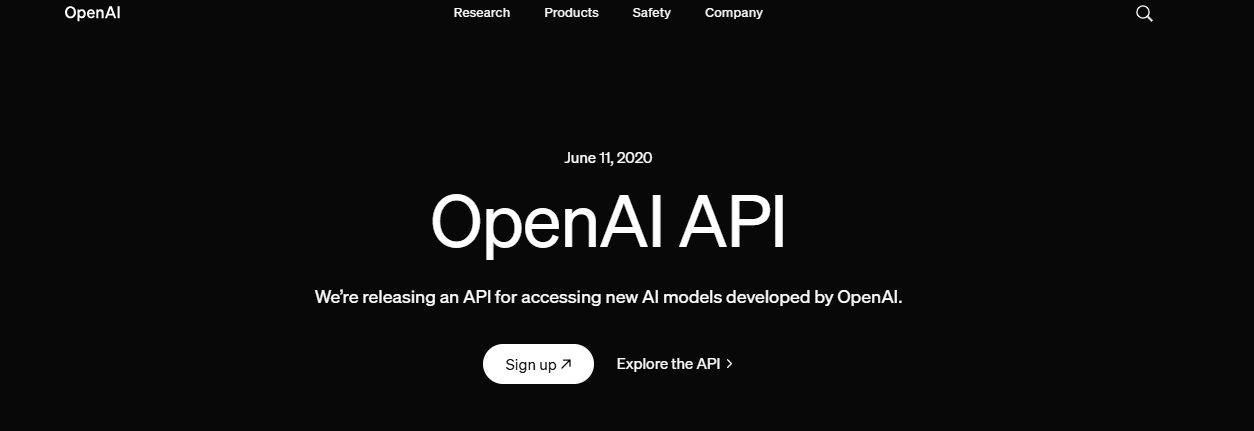
The market size for conversational AI is expected to expand from USD 13.2 billion in 2024 to USD 49.9 billion by 2030 (MarketsandMarkets).
Brands can communicate with customers on a 24/7 basis and provide real-time personalized answers. The key here is customization—creating an experience that feels personal to your brand.
The Benefits of Creating a ChatGPT Clone
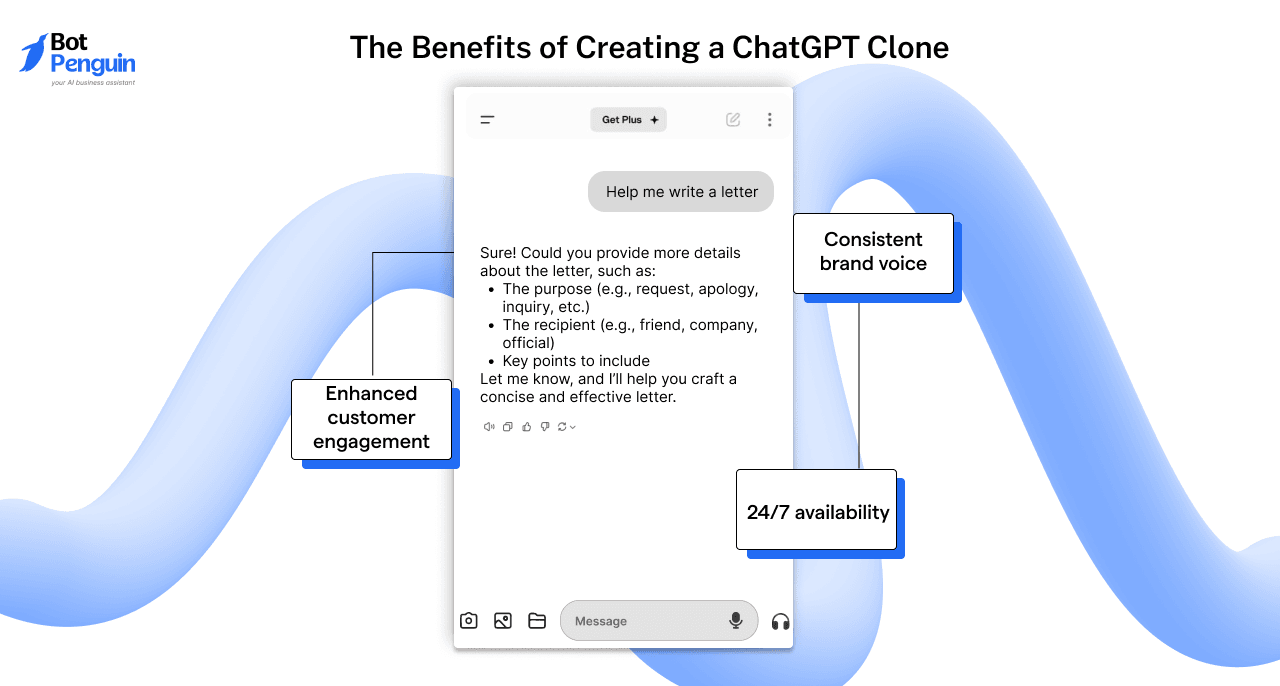
The strategic advantages extend far beyond simple automation. It encompasses enhanced brand consistency and data-driven insights. Developing a personalized ChatGPT clone of your own has several benefits.
- Consistent brand voice: There is always coherence in the interactions between the customer and the company, as they are always in accordance with the brand tone and the brand message.
- Enhanced customer engagement: With a ChatGPT app, you can offer instant, personalized responses to customer inquiries. It improves satisfaction and engagement.
- 24/7 availability: Your ChatGPT app replica can offer 24/7 servicing and thus satisfy clients' need for speed of response.
- Cost efficiency: A ChatGPT clone without code reduces the need for extensive customer service teams, cutting operational costs.
- Scalability: As your business grows, your best ChatGPT clone can scale effortlessly, handling more inquiries without additional human resources.
Technical Considerations of the Best ChatGPT Clone
The backend architecture of a proprietary ChatGPT clone is based on an advanced technological ecosystem. It integrates state-of-the-art AI frameworks, robust cloud computing, and scalable computing power.
Let's break down some essential components, from the frameworks you’ll use to the infrastructure needed to keep things running smoothly.
Choosing the Right Open AI ChatGPT Technology Stack
The choice of Open AI ChatGPT tools is critical when making a ChatGPT clone. It needs to process languages efficiently with high accuracy that scales to handle growing user volumes.
If not properly undermined, even the most powerful Open AI ChatGPT clone can leave a lot to be desired in terms of providing a smooth end-user experience.
The following are the main fields that one must pay attention to.
Natural Language Processing (NLP) Libraries and Frameworks
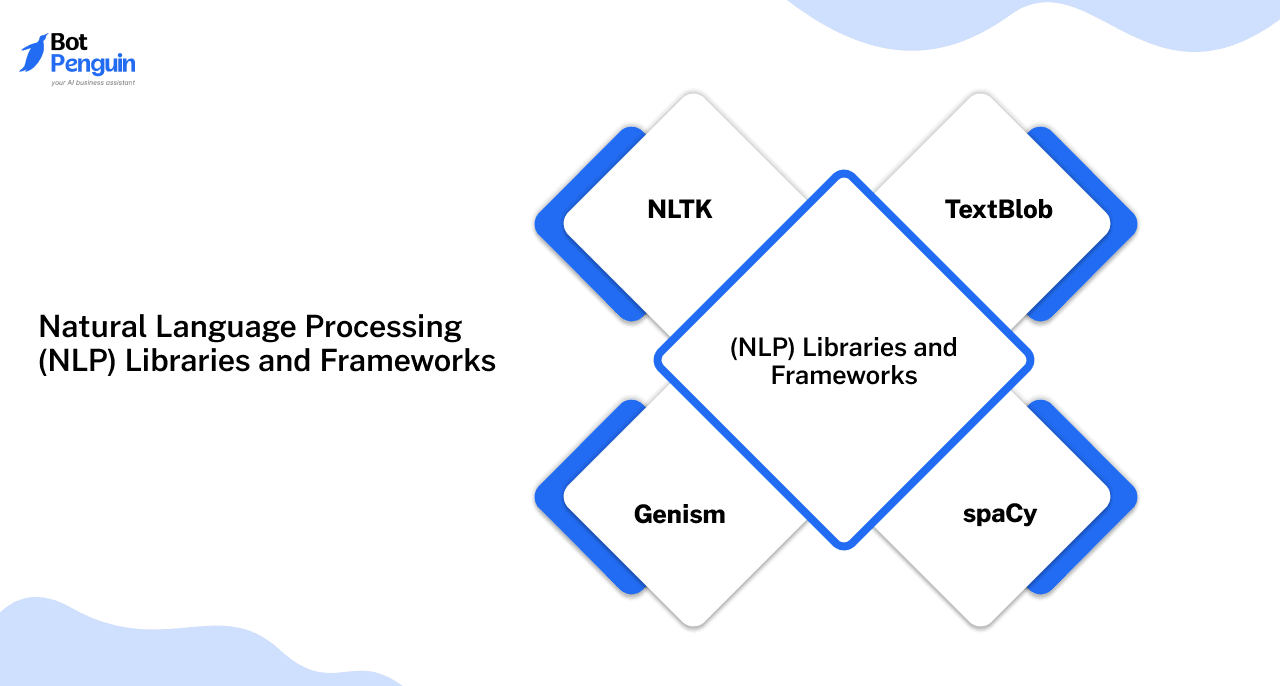
NLP is the core of any ChatGPT clone. It's how your bot learns about and speaks the language of humans.
You'll have to select NLP libraries or frameworks that achieve good accuracy on user input. There are several popular choices, such as spaCy, Hugging Face's Transformers, and Google's TensorFlow.
Each of the following aspects can be seamlessly added to your ChatGPT app to make conversations fluent and natural. For convenience and to save time and resources, you can also use the pre-trained models from Open AI ChatGPT, as needed.
Machine Learning Models and Training Data
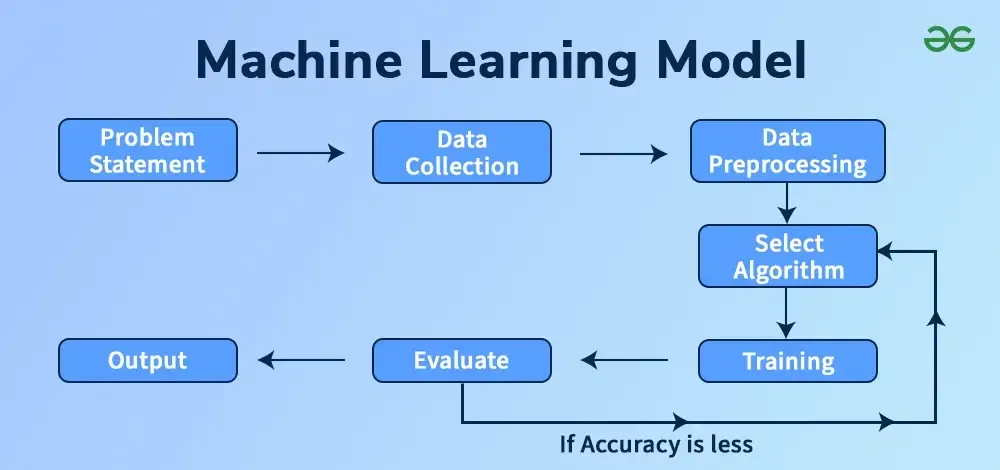
The quality of your Open AI ChatGPT clone varies greatly with the Machine learning model. It depends on what you select and the training data that you use to train it.
Another prevalent method for companies wishing to create their version of a ChatGPT, without writing code is to use pre-trained models. It includes GPT-3 from Open AI ChatGPT. This provides advanced functionality while requiring relatively little program execution.
Yet, if you need a highly individualized solution, train your ChatGPT app model on data from your field. This ensures that your chatbot provides relevant, on-point answers that align with your brand.
Cloud Infrastructure and Scalability
With a possible high number of user interactions, a ChatGPT clone must run on a scalable cloud infrastructure.
Cloud marketplaces such as AWS, Google Cloud, or Microsoft Azure may help increase the scale of implementing your ChatGPT derivative, Thus allowing it to handle a larger number of requests without impacting its performance.
Furthermore, these services provide flexibility to increase or decrease as desired, which will ensure your solution is both cost-effective and robust.
Branding and User Experience of ChatGPT Clone Without Code

Building a ChatGPT clone without code for your brand isn’t just about functionality. It’s also about creating an experience that feels personal and aligned with your brand identity.
Based on the tone of the AI responses to the interface design, every bit should contribute to brand building.
Here’s how to ensure your clone enhances your brand while providing a seamless user experience.
Aligning the Open AI ChatGPT Clone with Your Brand Identity
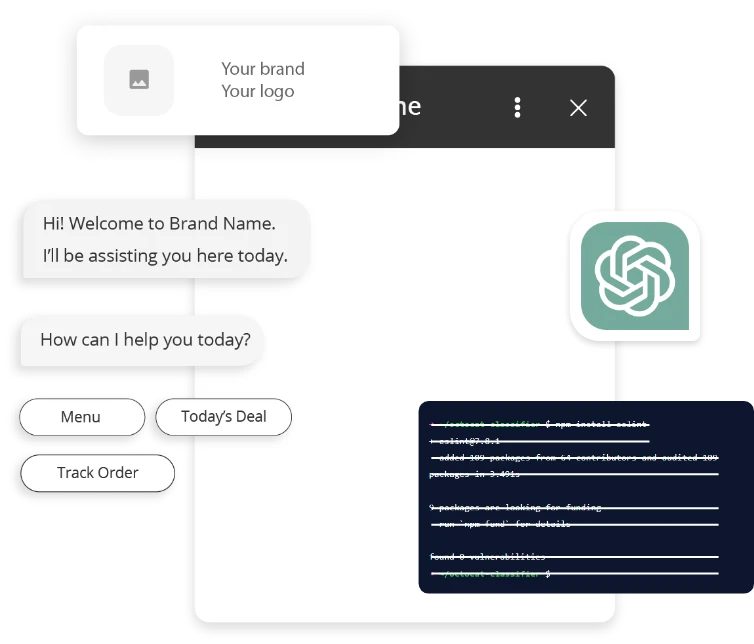
Your ChatGPT clone should reflect your brand’s voice and values. Whether your brand is fun and casual or formal and professional, it should be mirrored in the chatbot’s tone and responses.
You can customize the language and style of your Chatgpt app to suit how you talk to your clients. A best ChatGPT clone will allow for this level of customization, ensuring that the AI feels like a natural extension of your company’s personality, rather than a generic chatbot.
Customizing the User Interface and Experience
The user interface (UI) is the first thing people will notice about your best ChatGPT clone. The most important thing is that it not only looks nice but also feels intuitive, natural, and easy.
You are able to tailor the color scheme, fonts, and layout to match the visual appearance of your brand.
The more slick and personal the dialogue, the more trust users will place in your brand. Even if you’re using a ChatGPT clone without code, make sure it allows for enough flexibility in design, so your interface feels distinct.
Ensuring Brand Consistency and Coherence
One of the biggest risks when implementing a ChatGPT clone is the potential for mixed messaging. It is imperative that the bot is able to provide a consistent, unified message throughout all user communications.
In other words, no matter the task, answering questions, providing support, or making suggestions, your open AI chatgpt is meant to be on brand. All communication would have to feel seamless, and consistent with general marketing and brand message.
Ethical and Legal Implications of the Best ChatGPT Clone
Creating a ChatGPT replica requires addressing multifaceted challenges that ultimately go beyond technical implementation.
Creating an AI solution demands rigorous ethical considerations. Let's explore some of the key ethical and legal aspects.
Addressing Bias and Fairness in Open AI ChatGPT Models
AI models, such as your ChatGPT language model counterpart, is known to unintentionally inherit biases from the data they are trained on.
These biases can result in unfair or discriminatory responses. To avoid this, one should employ heterogeneous training data and keep a close watch on the chatbot's outputs.
To guarantee the fairness and accuracy of your Open AI ChatGPT model, it is important to periodically audit the same.
Especially if the ChatGPT app is meant for a heterogeneous user base, transparency in the decision-making process of the adopted AI will also build up user trust.
Suggested Reading:
Mastering NLP: Key to Customized ChatGPT Clone Development
Data Privacy and Security Concerns
Privacy of data and information is an area of concern while implementing a ChatGPT clone. Users will be likely to provide personal data and it is your duty to ensure the protection of that data.
Ensure that your best ChatGPT clone complies with regulations such as GDPR or CCPA, depending on your region.
Implementing strong encryption and secure data storage is essential. In addition, users must be made aware of how their data is being used, and have the ability to refuse to participate in data collection as they may deem appropriate.
Securing your ChatGPT clone not only builds trust but also helps you avoid legal complications.
Intellectual Property Rights and Copyright Issues
When creating a ChatGPT clone, you should be careful of intellectual property and copyright laws. Especially when it is being adapted for your brand,
Pre-trained models of Open AI ChatGPT are the norm. However, it is important to note that any alterations to or output of any chatbot should not be patented or constitute an infringement against existing intellectual property rights.
Do not integrate third-party data or code lightly, and always be certain you have the poisons or licenses you need.
Ethical Guidelines for Open AI ChatGPT Development
Creating ethical moorings for a ChatGPT clone of your own is critical for responsible AI. These principles are intended to address the way AI works with humans, the kind of data it gathers, and the way it learns over time.
However, even a closed-source ethical equivalent of ChatGPT cannot operate without compliance with rigorous standards regarding user disclosure, informed consent, and algorithmic fairness.
Engaging in ethical practices not only prevents negative feedback but also brings your chatbot in line with international best practices in AI development.
Development and Deployment of the ChatGPT Clone
The development of an advanced chatbot involves a well-coordinated, multistep process that turns abstract vision into a hard, real AI-based communication model.
Organizations must approach this development as a comprehensive strategic initiative, integrating technological innovation with a deep understanding of their unique business requirements and communication objectives.
Let's walk through the process of chatbot design and deployment.
Planning and Project Management
Building the ChatGPT clone, however, requires strong planning. There are clear objectives for what you are trying to achieve with the chatbot and a development timeline.
Especially, this also means specifying what features and functions your ChatGPT application is expected to carry out. It includes natural language processing, integration with external systems, or interface design.
Effective tools of project management, such as Agile or Scrum, support the development process by keeping it aligned. This structured approach ensures that your team delivers the best ChatGPT clone on time and within budget.
Iterative Development and Testing
AI development thrives on iteration. Following the planning and project management, the next stage is iterative development.
This means your ChatGPT clone is developed in several iterations, and each of these iterations is periodically tested. Testing guarantees the chatbot works as intended and also that it replies both correctly and in a way that with your own brand's voice.
The test should be broad, covering, for example, language understanding to high throughput performance.
Tools such as unit tests and user testing can optimize the performance of your Open AI ChatGPT app model, resulting in a quality final product. Continuous iteration is conducive to the early detection of problems and their quick resolution.
Deployment and Maintenance Strategies
Once your ChatGPT is ready to go live and is tested, there is nothing more to it besides deploying it.
For deployment, you’ll need to consider scalability, as your chatbot may experience varying levels of user traffic. Cloud platforms like AWS or Google Cloud allow for flexible, scalable deployments that can handle demand increases.
The maintenance is critical after the release of the code-free-ChatGPT clone online. Consistent updates, bug fixes, and additions to new features are required to maintain your ChatGPT clone competitive and to meet user expectations.
Suggested Reading:
Top Development Platform for Your ChatGPT Clone: BotPenguin
Marketing and Promotion of the Best ChatGPT Clone
Let's discuss strategizing a focused marketing plan for how to market your ChatGPT app and generate app user engagement.
Creating a Marketing Strategy for Your Open AI ChatGPT Clone
First, clearly state the goals of marketing your ChatGPT clone. Determine whether the goal is to drive user uptake, lift brand, or drive customer engagement.
Craft a value proposition highlighting the benefits of using your best ChatGPT clone over other solutions. This will be the blueprint for your marketing copy in all its different formats.
Targeting the Right Audience
Your ChatGPT clone has to target the right audience. Identify your target audience based on demographics, business needs, or industries that would benefit from using a ChatGPT clone without code.
Understanding your users’ pain points helps tailor the chatbot’s features and messaging, making it more relevant and attractive.
Leveraging Social Media and Content Marketing
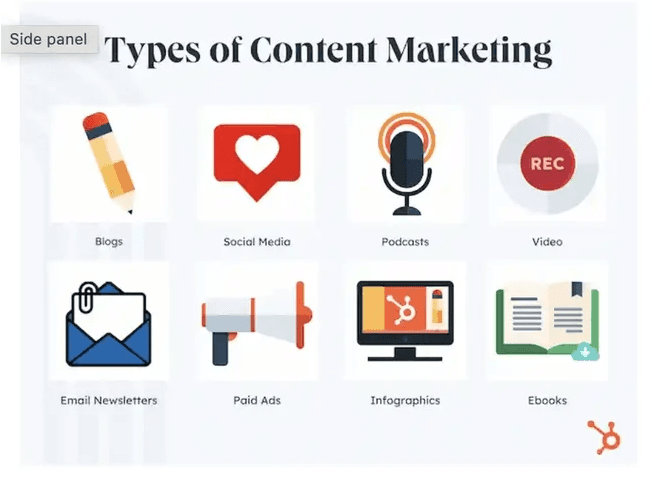
Social media is a powerful tool for promoting your ChatGPT clone. Create engaging posts, tutorials, and case studies that showcase how your open AI Chatgpt can solve real-world problems.
Pair this with content marketing strategies like blogs, videos, and newsletters to keep your audience informed and interested. Regularly update your audience on new features or success stories to build credibility.
Building Partnerships and Collaborations
Collaborating with other businesses or influencers can amplify your ChatGPT clone’s reach.
By forming partnerships with companies or individuals aligned with your goals, you can tap into new customer bases and expand the chatbot’s exposure in different markets.
Conclusion
In conclusion, businesses are seeking transformative communication solutions. It must blend technological sophistication with strategic insight.
Platforms like BotPenguin are pioneering approaches that bridge the gap between advanced AI capabilities and practical business implementation.
Unlike traditional chatbot platforms, these next-generation AI solutions offer a revolutionary approach to business communication. Organizations can now leverage enterprise-grade AI without extensive technical expertise by democratizing advanced conversational technologies.
The removal of complex coding barriers empowers businesses of all scales to deploy intelligent communication systems that adapt, learn, and interact with unprecedented precision.
What sets these platforms apart is their holistic approach to AI integration. They don't just replicate conversational abilities; they create intelligent communication ecosystems tailored to specific business needs.
With proven track records of supporting diverse industries, BotPenguin has demonstrated remarkable versatility in solving complex communication challenges.
Security and performance stand at the core of these advanced AI design philosophies. The platforms ensure robust data protection while maintaining the nuanced conversational intelligence that modern businesses require.
The future of business communication is intelligent, responsive, and personalized. These AI platforms represent technological solutions and gateways to reimagining how businesses connect, understand, and serve their audiences.
Frequently Asked Questions (FAQs)
What is a ChatGPT clone and why should I create one for my brand?
A ChatGPT clone is a customized chatbot based on Open AI ChatGPT models. Creating one allows you to align AI interactions with your brand’s voice, improving customer experience and engagement.
How can I align a ChatGPT clone with my brand identity?
You can customize the chatbot's tone, responses, and user interface to reflect your brand’s personality. This ensures that every interaction feels consistent and on-brand, providing a seamless experience for your customers.
What technology stack is required to build a ChatGPT clone?
You’ll need natural language processing (NLP) libraries, machine learning frameworks, and scalable cloud infrastructure like AWS or Google Cloud to support your ChatGPT clone and ensure high performance and scalability.
How can I ensure the security of my ChatGPT clone?
Implement encryption, secure data storage, and ensure compliance with privacy regulations like GDPR or CCPA. Inform users about how their data is handled and give them control over their personal information.
What are the ethical concerns in developing a ChatGPT clone?
Key concerns of a ChatGPT clone include addressing AI bias, ensuring fairness, protecting data privacy, and adhering to intellectual property laws. Ethical guidelines should be followed to create responsible AI that builds user trust.
How do I promote my ChatGPT clone effectively?
Develop a targeted marketing strategy that highlights the benefits of your chatbot using ChatGPT clone without code. Use social media, content marketing, and partnerships to reach your audience and drive engagement with your ChatGPT app.



